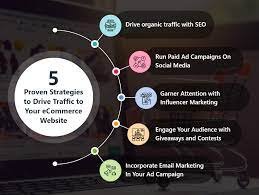[ad_1]
The Ultimate SEO Checklist: Optimize Your E-commerce Site for Success
In the competitive world of e-commerce, having a well-optimized website is vital for success. A strong online presence can drive traffic to your site, increase conversions, and ultimately boost your revenue. One of the key strategies to achieve this is search engine optimization (SEO).
SEO involves optimizing your website and its content to improve its visibility in the search engine results pages (SERPs). By following a comprehensive checklist, you can ensure that your e-commerce site is properly optimized for search engines and positioned for success. Here is the ultimate SEO checklist for optimizing your e-commerce site.
1. Keyword Research
Start by conducting thorough keyword research to identify the terms and phrases that your target audience is searching for. There are numerous keyword research tools available, such as Google Keyword Planner or SEMrush, which can help you determine the most relevant and high-traffic keywords for your industry.
2. On-Page Optimization
Once you’ve identified your target keywords, it’s important to strategically place them throughout your website. Optimize your page titles, meta descriptions, headers, and URLs to include relevant keywords. However, be careful not to overdo it, as excessive keyword usage can lead to penalties from search engines.
3. URL Structure
Ensure that your URL structure is clean, user-friendly, and contains relevant keywords. Short and descriptive URLs are not only easier for users to remember but also make it easier for search engines to index your site.
4. Mobile Optimization
With the rise of mobile internet usage, it is crucial to have a mobile-friendly website. Responsive design is essential to ensure that your site is accessible and navigable across different devices. Mobile optimization is not only important for user experience but also a ranking factor for search engines.
5. Site Speed
Optimize your e-commerce site for fast loading speeds. Slow-loading pages can lead to high bounce rates and lower search engine rankings. Compress images and use caching techniques to improve your site’s speed.
6. Content Optimization
Focus on creating high-quality and informative content that is relevant to your target audience. Incorporate your target keywords naturally within the content, and ensure that it is well-structured with headers, bullet points, and subheadings. Use internal linking to guide visitors to other relevant pages on your site.
7. Product Descriptions
Craft unique and compelling product descriptions for each item in your e-commerce store. Avoid using manufacturer-provided descriptions, as they are often duplicated across multiple websites. Unique, informative, and keyword-rich product descriptions will not only help search engines understand your products better but also entice customers to make a purchase.
8. Image Optimization
Optimize your product images by compressing them without compromising quality. Add descriptive alt tags to help search engines understand the content of the images. This can improve your site’s visibility in image search results and enhance overall SEO.
9. User Experience
Ensure that your website offers a seamless user experience. Make it easy for visitors to navigate and find what they are looking for. Implement a clear and intuitive site structure, optimize your internal search function, and provide clear calls to action throughout your site.
10. Schema Markup
Implement schema markup to provide search engines with additional information about your website and its content. This structured data can help search engines understand the context of your pages better, leading to better rankings and enhanced visibility in SERPs.
11. Secure Website
Make sure that your e-commerce site is secure and SSL certified. Not only does this instill trust in your customers, but it is also a ranking signal for search engines.
12. Monitor and Analyze
Regularly monitor your website’s performance using analytics tools like Google Analytics. Track metrics such as traffic, bounce rate, conversion rates, and keyword rankings to identify areas that need improvement and make data-driven decisions.
In conclusion, optimizing your e-commerce site for search engines is vital for its success. By following this ultimate SEO checklist, you can ensure that your website is properly optimized and positioned for increased traffic, conversions, and revenue. Remember that SEO is an ongoing process, and staying up to date with the latest SEO trends and continuously optimizing your site is key to long-term success in the competitive e-commerce landscape.
[ad_2]






